RS 6 Avant, RS 7, RS Q8, and RS e-tron GT: Four Stormers from the Four Rings
You’ve seen the 4-ring logo for years and maybe assumed (especially every four years) that the Audi brand was attempting to catch some rays from the glow of the World Olympic Games. Given that the games have been traced back to the eighth century BC, however, it’s very doubtful that the Olympics took their symbol from the car company. Nevertheless, the most common origin story for the Audi rings is that they symbolize the 1932 union of four major automakers into what then was called the Auto Union AG.
Whatever the underlying reason for the symbol, it has come to represent some of the most impressive cars in the world, and this current crop of contenders may be the best group yet.
First, a brief review of Audi nomenclature: the numerals indicate the body. Typically, the higher the number, the bigger the vehicle. Add “RS” to the model and you get the “Renn Sport” (in English “Racing Sport”) version of that car, made by the company’s “Audi Sport” division. e-tron is obviously for the Audis with electrification, though some models were named only “e-tron,” while others like the newest member of the electrical family, the GT, use “e-tron” to denote the model which is battery operated.
So, with that background in mind, let’s take a look at this quintessence of quartets.
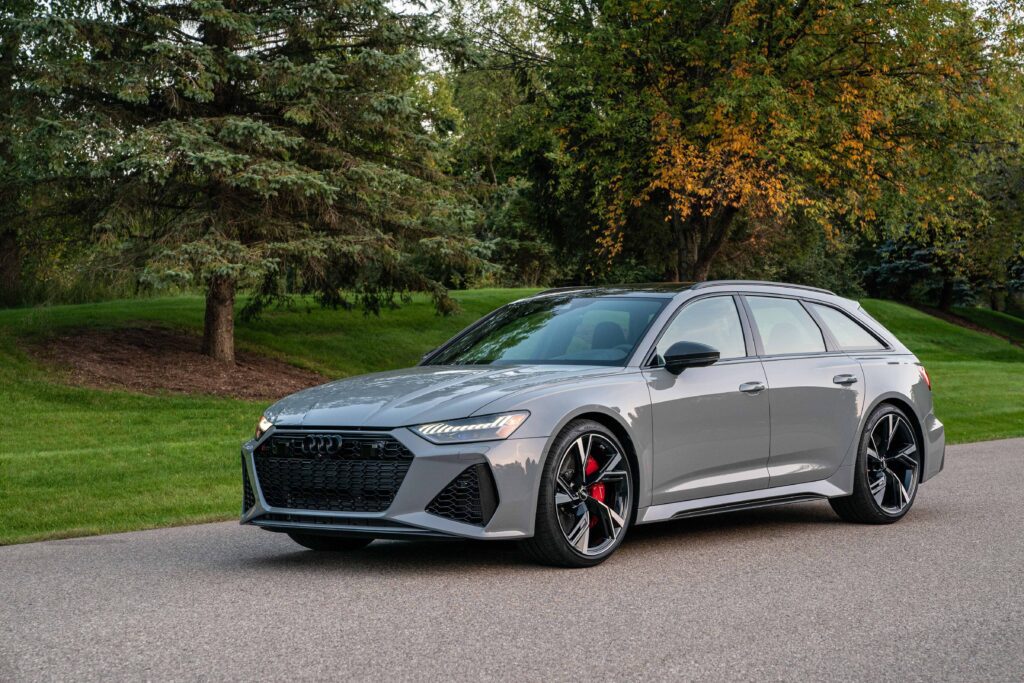
Based on numbering, the RS 6 Avant is up first. While avant may be “forward” in some contexts, here it means rearward in terms of the difference between the “regular” RS 6 and the Avant version, as the two cars differ substantially in the area behind their rear doors. In the US, the Avant would be called a “wagon,” and in the UK, maybe a “shooting brake” or, as some would have it, an “estate car.” It’s hard to think of it as a station wagon, though, as it can be equipped with 591 hp and 590 lb-ft of torque, rip through 0 to 60 in 3.5 seconds, and is capable (depending on one’s chosen options) of 190 mph. The twin-turbo, 4-liter V8 mated with a paddle shifting (or automatic shifting) 8-speed transmission and Audi’s famous Quattro sport differential make for terrific handling and incredible acceleration. Clearly, this is not what one used to envision as a station wagon.
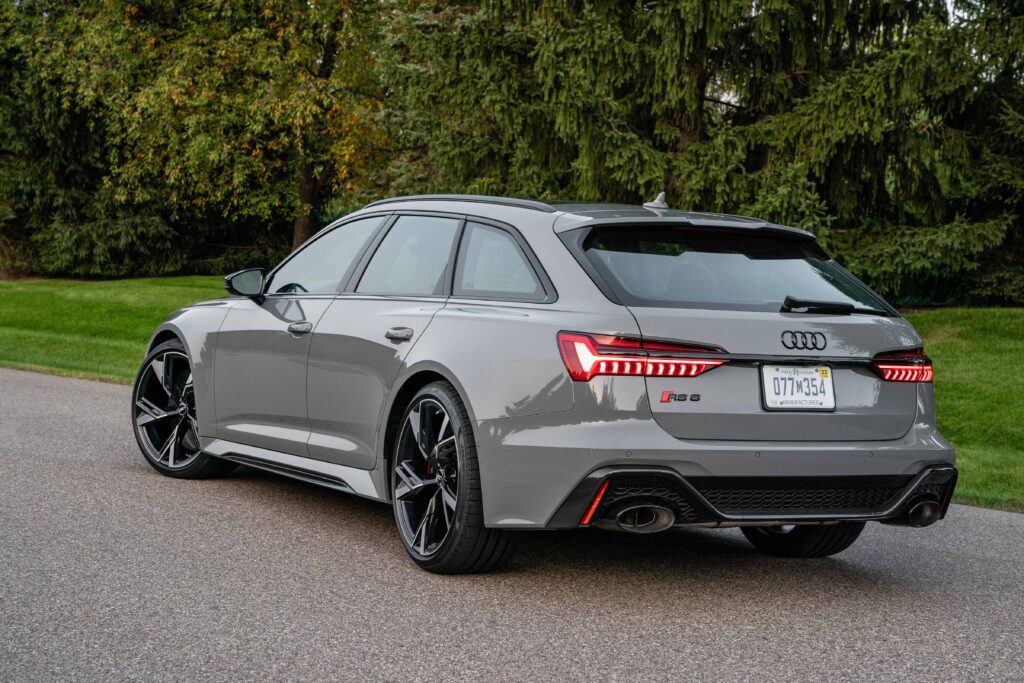
But this is not a car only for the stoplight grand prix. Sure, not only can you dial the adaptive air suspension to high-performance dynamics (and really take advantage of the all-wheel steering), but you also can opt for a quieter engine sound and trim down the ride for a cross-country cruise.
The interior is up to the task, too. With a few high-def infotainment displays and leather sports seats (with a honeycomb design), it’s a great way to spend time on the road or the track. The base price is $109,000, but “my” “Nardo Gray” Avant had some fine options, like red ceramic brakes ($9,000), lots of carbon bits here and there ($6,350), and a package that included several items, like heated front and rear seats ($2,500), which added just over $22,000 to the total. But I liked them all. I would drive this car to the station any day, even one in another state.
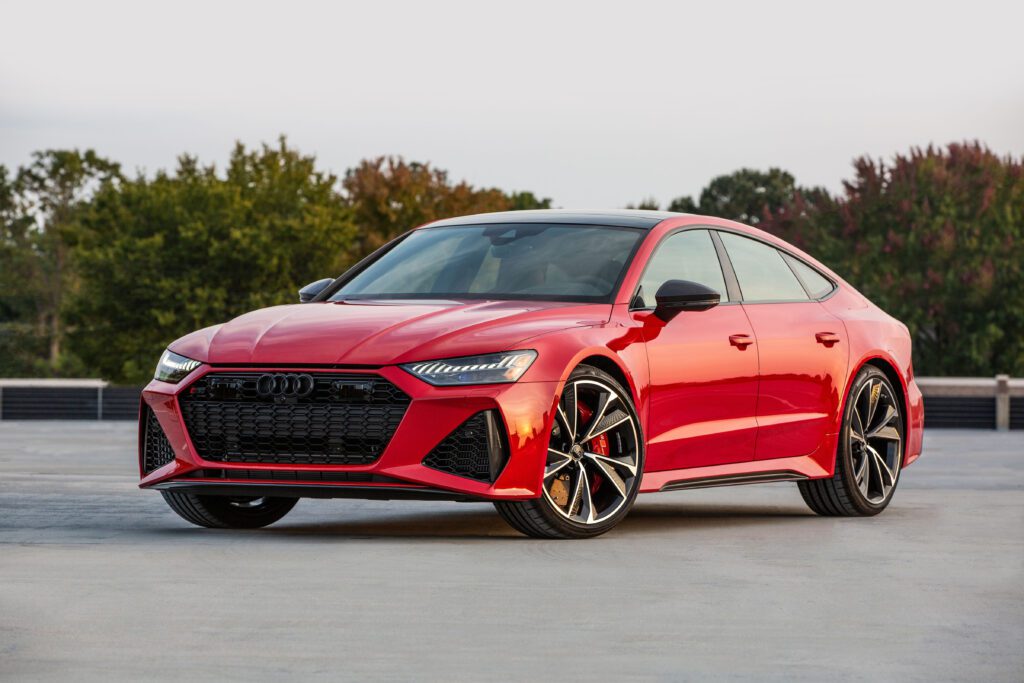
The RS 7 is a sleek sedan, the largest RS car that Audi makes (though they do make an S 8). This 4-door is like a luxury sedan by day and a performance car at night (or street car by weekday and track car by weekend). However you want to label this car, suffice to say that it can be whatever you need it to be at any given time. With stats that mimic the RS 6 Avant (horsepower, torque, acceleration, top speed), it sits lower and sports a more aggressive stance. It’s also a 5-seat, 4-door car, so it’s practical (so you can convince your accountant that it’s for business use—just don’t let him see that rear spoiler which automatically deploys at over 60 mph). If you opt for the 22-inch rims (as “mine” did), you get a great low-profile look with some pretty big shoes.
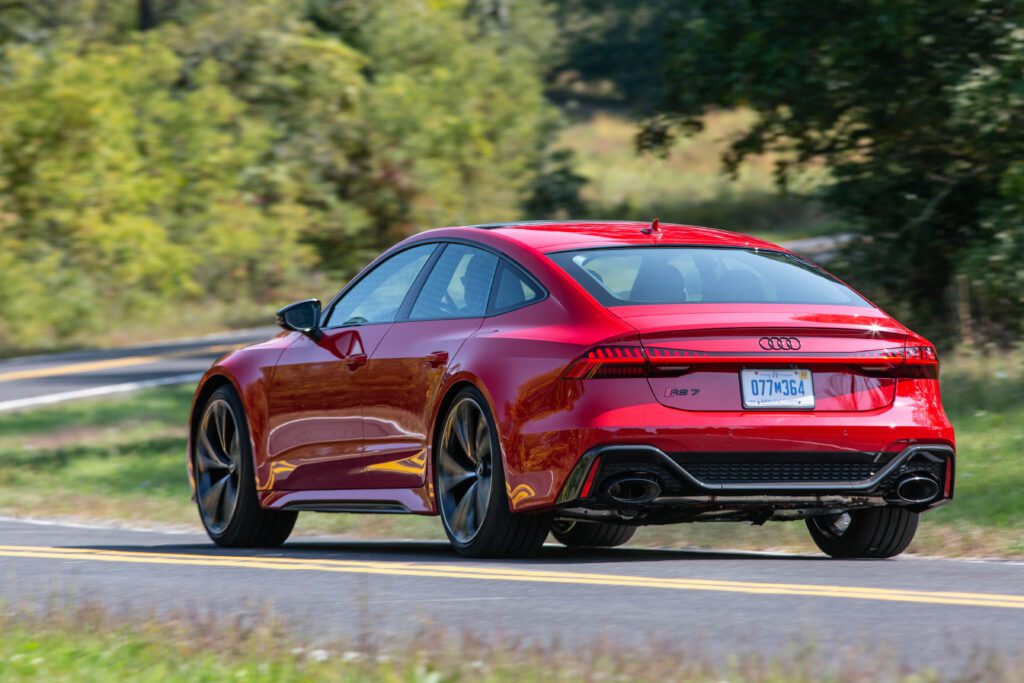
The interior meets expectations in a car that looks as elegant and sporty as the RS 7. Leather abounds and the sports-look touches are everywhere. The performance seats were great on the twisties along Mulholland Drive and up and down the neighboring canyons. The carbon brakes were flawless. Though I’ve never met an Audi that I didn’t like, the RS 7 is probably the most flexible and usable sports sedan of the bunch.
I loved the red stitching on the black leather seats on “my” RS 7, especially with the “Tango Red Metallic” paint and option red ceramic brakes. The base price on the RS 7 is $114,000, but with a build list that included about $23,000 in options, the MSRP was just over $137,000. After my week with the RS 7, the price seemed more than reasonable.
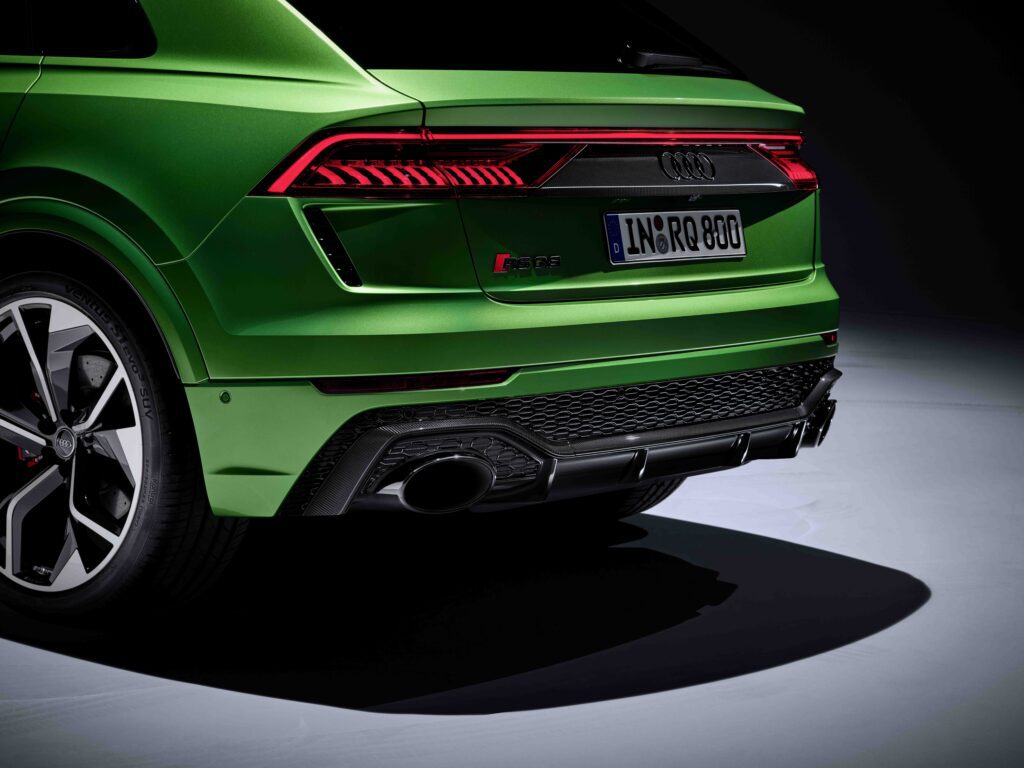
The RS Q8 was a completely different experience, though I did note the family resemblances with the Lamborghini Urus and the Bentley Bentayga. The RS Q8 was not as wild as the Lambo and not as luxurious as the Bentayga, but the price point ($113,000 base) was far different, too.
As you might expect, the stats on the RS Q8 closely followed those of its RS brethren discussed above (in terms of horsepower, torque, and top speed), though it was two-tenths of a second slower going from 0 to 60 (not that anyone would notice when driving it). In loud mode (the only one I ever use), it had the burble and cackle of a thoroughbred ready at the gate, and, in all-wheel drive mode, it made good use of all of the ponies when on a sprint. The handling was somewhat of a surprise (though it shouldn’t have been), as an SUV-shaped car has a higher center of gravity which usually means riverboat cornering (as in “wallowing”); yet, the RS Q8 can carve the canyons with the best of them. No doubt the kudos belong to the adjustable air suspension (including active roll stabilization) and the ability of the rear differential to distribute torque to the wheel which needs it (typically the inside wheel) in something called “torque vectoring.” All you really need to know about this topic is that the RS Q8 beat the record for the fastest production SUV at the Nürburgring racetrack at an unofficial time of 7 minutes 42.253 seconds.
“My” RS Q8 was “Navarra Blue Metallic” with black leather interior with red contrast stitching. The red carbon brakes, lots of carbon fiber add-ons, and other clever bits and pieces pushed the price to $137,990. I loved every minute in this rocket.
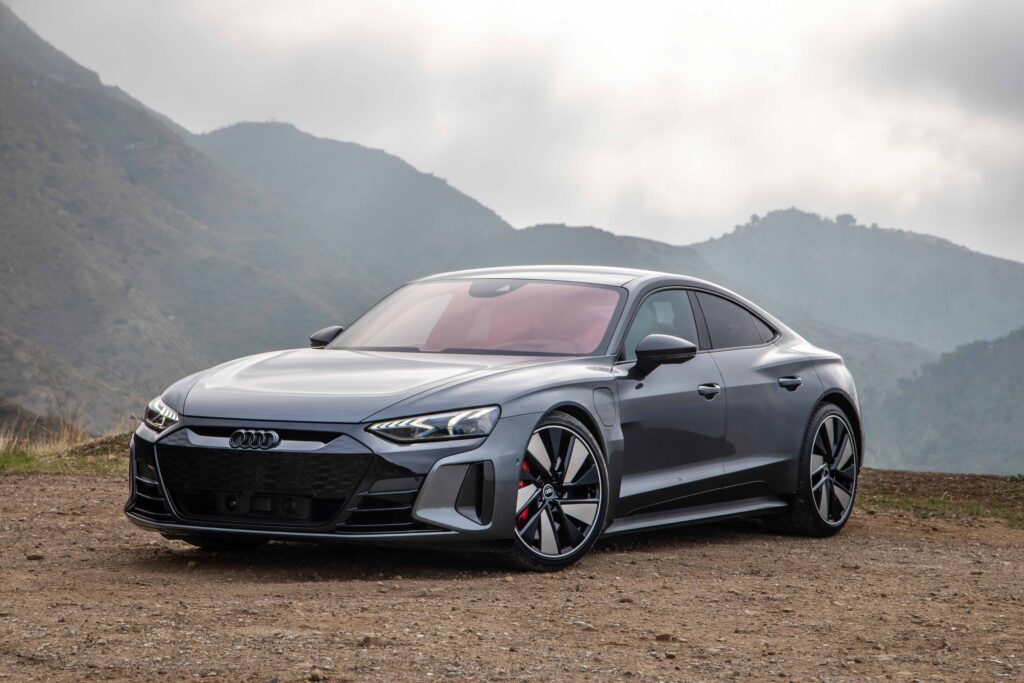
Last, but certainly not least, is the new kid on the block, the “electric halo” that shines brightly over the Audi portfolio: the all-electric RS e-tron GT. There are two versions of the e-tron GT, similar but designed to meet different goals. The e-tron GT has a longer range and is their “long-distance all-rounder,” whereas the RS e-tron GT is the sportier relative with a carbon fiber roof, a more-powerful battery, and higher performance. Both are available with all-wheel steering and torque vectoring. Of course, I asked to borrow the RS version of the e-tron GT. Yes, this car shares some similarities with the Porsche Taycan: it was developed in conjunction with Porsche, but it’s certainly not just a rebadge. Audi’s take on their first all-electric GT leads them to term it “a Gran Turismo unlike any other.” A 4-door, 4-seat coupe, it sits low and looks long and sleek. Two electric motors, one front and one aft, power the car. On the RS edition, there’s power indeed with 637 hp and 612 lb-ft of torque. Zero to 60 is achieved in 3.1 seconds, and the top speed is just over 155 mph. Depending on which model you get (and how heavy your right foot is), e-tron GTs can provide a range of 232 miles (manufacturer’s estimate) and, with high-speed charging available (80% charge in less than 23 minutes on the RS), you can “fill up” and be on your way in no time.

My time with the RS e-tron GT included a rainy drive along the mountain ridge of Mulholland Drive, a road I’ve driven and ridden along for decades, but rarely when it was wet. This twisty road can be unforgiving, and there are many places where crash barriers are not installed. Yet the RS performed like it was on rails, an incredible feat when you remember the pavement-warping torque which the RS is capable of producing.
To say that I am a fan is an understatement. This vehicle, either in stealth mode or with the audio enhancement which provides engine sounds inside the cabin, is destined to be a big seller, as anyone can indulge his or her inner Lewis Hamilton (or Walter Mitty) and feel good about the results.
With these four Audis to choose from, you really can get whatever you need, especially if you enjoy a “sporting” drive every once in a while. These cars all can suit your mood at any time, a feat in and of itself, with class and performance.
PHOTOS COURTESY OF AUDI OF AMERICA
